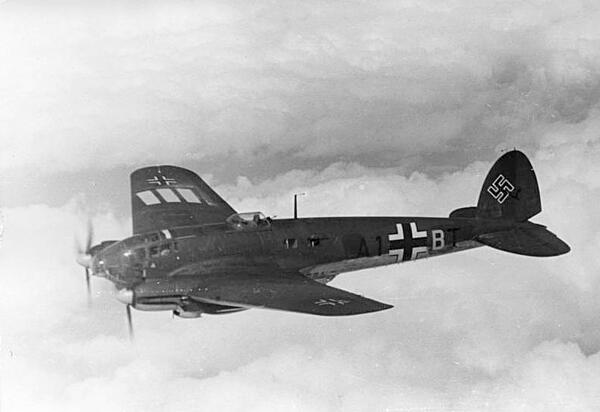Germany and rearmament
Like many other nationalists, Adolf Hitler was convinced that the Treaty of Versailles was 'unjust'. In both his speeches and in Mein Kampf (published 1925) he openly proclaimed his intention to break the stringent terms of the Treaty. One such condition was the ban on German rearmament; Nazi Germany commenced rearmament in 1935.
Hitler conceived of Nazi Germany as the great power of Europe. But it lacked the military prowess to fulfil its true potential. His military was not in quite the dire state that it appeared on paper. Germany had technically kept to the terms of the Treaty of Versailles during the 1920s, but had managed to covertly exploit loopholes in the Treaty. For example, Versailles had neither explicitly prohibited German submarine crews from training abroad, nor forbidden the German Air Force (which was banned) from training on civilian planes. However, there were still severe Treaty rules that Germany was required to obey. Hitler resolved to reject these rules and openly trumpet Germany's right to determine the future of its own military.
In 1933, he pulled Germany out of the Geneva Disarmament Conferences when the French rejected his proposals. He had argued that, because Germany was already disarmed, France and the rest of Europe should disarm to the same level so that power was equally balanced. In the same year, Hitler started pursuing an aggressive re-armament programme. German generals were ordered to treble the army to 300,000 troops; the Air Ministry was ordered to build 1,000 war planes. This expansion continued clandestinely for two years.

Finally, in March 1935, Hitler felt confident enough to reveal Nazi Germany's rearmament programme. The rest of Europe discovered that Germany now had 2,500 war planes and 300,000 troops. Hitler declared that compulsory military conscription would be introduced and that the army would be further enlarged to 550,000 men.
Europe's response to German rearmament
Despite Hitler’s provocative stance, European leaders did not react dramatically to the news of German rearmament and Hitler’s brazen violation of the Treaty of Versailles. In fact, they barely did anything at all. The French had decided to pursue a defensive policy against the German military threat. She built the monumental Maginot Line of fortifications on the Franco-German border. Britain was also reluctant to provoke Germany: her economy had been decimated by the Depression and she could not afford war.
The Stresa front was formed between Britain, France and Italy (Italy had not at this time fully invaded Abyssinia and was not yet a German ally) in April 1935. Amongst other things, they protested against German rearmament, but little was done to follow through on this protest.
Indeed, Britain even seemed to support Germany's rule-breaking. Germany was banned from possessing submarines by the Treaty of Versailles, and was only allowed six warships over 10,000 tons. In June 1935, however, Britain signed with Germany the Anglo-German Naval Agreement, which was completely at odds with these Treaty specifications. Germany was allowed to have 35 per cent of the tonnage of the British navy's surface fleet and an equal tonnage of submarines (though Germany promised to not go over 45 per cent without notifying Britain).
Why did Britain sign the Anglo-German Naval Agreement?
The Anglo-German Naval Agreement marked the start of the policy of appeasement. Whatever they did, Britain believed that Nazi Germany would continue to enlarge her navy. They felt that a pact would encourage friendlier relations between the countries. Some Britons also believed Germany had legitimate grievances against the Allies because the Treaty of Versailles had been unfair. They hoped the pact would help assuage Germany's anger towards Europe and reduce the chances of further conflict. If Germany abided by the agreement, Britain would also be able to monitor the size of the German navy.
The British public were confused by the agreement. At Stresa, Britain had protested against German rearmament. Now, only two months later, they were allowing it. But Britain would continue to follow the doctrine of appeasement until the outbreak of war.
See also: Rhineland 1936
MLA Citation/Reference
"Germany and rearmament". HistoryLearning.com. 2026. Web.
